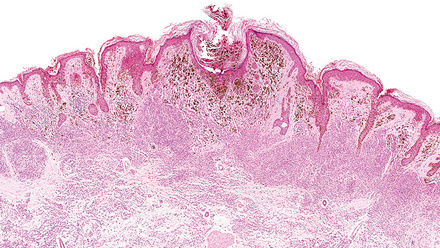IBMS/RCPath Embedding Wax Supply Guidance
The IBMS and the Royal College of Pathologists (RCPath) have collaborated to provide the profession with guidance around the emerging issue with the supply of wax for processing and embedding histopathology samples.
National Supply Disruption Response (NSDR) are liaising with procurement colleagues from National Services Scotland (NSS) and Wales and Northern Ireland to ensure there is a UK wide approach to this supply issue.
The IBMS/RCPath guidance document is pasted in full below and is also available to download at the bottom of the page.
Joint guidance on Embedding wax supply to Histopathology laboratories.
Introduction
The Royal College of Pathologists (RCPath) and the Institute of Biomedical Science (IBMS) are aware that there is an emerging issue with the ongoing supply of wax for processing and embedding histopathology samples.
This document signposts best practice guidance and practical advice for optimising utilisation of histopathology wax while maintaining clinical standards. It represents prevailing best practice that should be followed in day-to-day practice.
Discussions with NHS England and the Department of Health and Social Care (DHSC) suggest that this supply issue is likely to last for a number of weeks, with more robust supplies available during Autumn 2022. It is expected that this will be a UK wide issue.
During this time stocks are likely to be constrained. We encourage organisations to work collaboratively, follow relevant guidance and engage with the National Supplier Disruption Response Team (NSDR) to make optimal use of available supplies this will limit the risk of histopathology service disruptions. NSDR are also linked into the Devolved Administrations.
Advice on supply chain and suppliers will be covered outside of this advisory document from DHSC/NHS England or Government bodies. We recommend that this guidance is followed closely.
Guidance
This guidance has been developed in discussion with the Specialist Advisory Committee/Panels from both organisations. There are a number of steps that organisations can take to optimise the use of the available stocks of wax, which should be taken now.
The following recommendations should not be taken at the expense of a high-quality clinical service. Each alteration to an existing process should be risk assessed locally and decisions made involving the operational, scientific and clinical teams.
Laboratories should regularly forecast likely usage trajectory against current stock levels to understand the level of risk against stock supplies. If it becomes clear that your laboratory will exhaust stocks you should alert your organisation following existing escalation protocols.
Operational
- Laboratories should seek to ensure that they have checked their Business Continuity Plan (BCP). This includes communicating with current suppliers and back-up laboratory services to ensure they can be of support.
- Look to pathology network colleagues to establish communication channels to understand the wider situation for mutual aid and to ensure esoteric samples (for example, those requiring special processing protocols) are handled to maximum capacity in any processors.
- Consider decommissioning a sample processor and/or embedding station to ensure each workstation is used to capacity.
- For tissue processors, consider extending usage limits where reagent quality can be maintained. Maximise the capacity in each processing run. Only run processor when at least at 75% of capacity.
- Continue to maintain good laboratory practice. Ensure workstations are clean and well organised and that daily stock checks are performed.
- Ensure all staff are trained and competent for the tasks they are performing to reduce errors.
Cut-up and Embedding
- Laboratories should ensure they follow the relevant guidance issued by the RCPath on sample selection, quantity, and handling of samples unless there are clear clinical reasons not to. (See link below)
- Consultant Histopathologists and senior scientists should be available to provide timely and robust guidance on the number of blocks to be sampled for each specimen. This will ensure that an efficient blocking strategy is used, minimum of blocks are taken while maintaining the capacity to accurately assess specimens histologically.
- Continuation of good practice in the selection of moulds to the size of the sample. Avoid using larger than necessary moulds. Processes should be wax efficient at all times.
- Only use mega blocks where absolutely necessary, taking multiple smaller blocks if possible.
- Maximise the amount of tissue in each block wherever safe and possible.
Clinical
- Each laboratory and discipline should pro-actively make a planned and informed decision on which cases may safely be delayed in the laboratory. This should be done including the wider clinical team, and should be done as soon as possible to maximise the available wax for cases that cannot be delayed.
- The wax shortage should not be a reason to delay training. However, additional supervision should be considered to make sure of efficient use of constrained supplies.
Alternative wax sources
- NHS E / DHSC and Government bodies will be looking at alternative supplies. Your supplier may offer alternative product. If you are selected as a site where an alternative supply should be trialled, all validation data and evidence should be prepared in a way that can be shared openly to allow other sites to conduct a verification of the performance of the wax.
- Any validation should also be done with advice from UKAS to ensure that data for validation can be shared as evidence for the change in process in other centres.
Guidance documents:
https://www.rcpath.org/profession/guidelines/cancer-datasets-and-tissue-pathways.html


